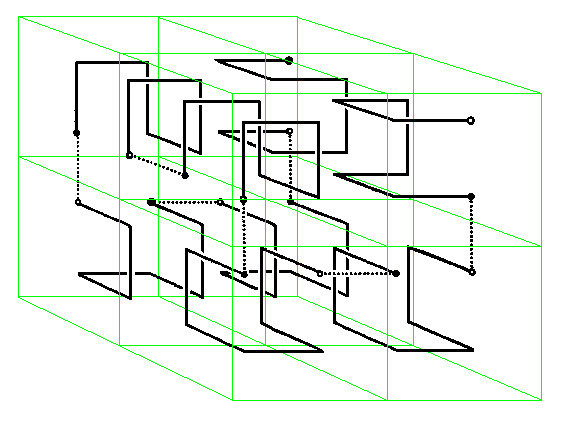Technology Review | the physics arXiv blog | 08 Sept 2010
The Small Scale Structure of Spacetime - S CarlipThe latest thinking about quantum gravity suggests that spacetime is 2-dimensional on the smallest scale. And there may be a way to prove it
In 1973, George Ellis and Stephen Hawking published a book called The Large Scale Structure of Spacetime. Their aim, they said, was to understand spacetime on the scale ranging from 10^(-13)cm to 10^28cm or, in other words, from the size of elementary particles to the radius of the universe.
That may sound ambitious but nearly 40 years later cosmologists have pretty much nailed it, says Steve Carlip, a theoretical physicist at the University of California, Davis. "To the best of our ability to measure such a thing, it behaves as a smooth (3+1)-dimensional Riemannian manifold."
Which is why theoretical physicists have turned their attention to the structure of spacetime on even smaller scales. However, there is a problem here. "For the most part we have neither direct observations nor a generally accepted theoretical framework for describing the very small-scale structure of spacetime," says Carlip. Indeed, nobody is quite sure whether the terms 'space' and 'time' have any reasonable meaning at this scale.
Today, Carlip outlines his own fascinating take on the problem which is that spacetime on the tiniest scale may be two dimensional. While that may seem a little counterintuitive, he says there is a growing number of indicators (evidence is too strong a word) that point to that conclusion.
Carlip says recent work in loop quantum gravity, high temperature string theory, renormalization group analysis applied to general relativity and other areas of quantum gravity research, all hints at a two dimensional spacetime on the smallest scale. In most of these cases, the number of dimensions simply collapse in a process called spontaneous dimensional reduction as the scale reduces.
One obvious question is that if only two dimensions are present on this scale, which two are they? Carlip calculates that they must be one of time and one of space. "At each point, the dynamics picks out a "preferred" spatial direction, leading to approximately (1+1)-dimensional local physics," he says.
He then moves into interesting territory with the claim that this preferred direction must be determined classically and then randomised by the physical processes at work on these scales. That sounds tantalisingly like a hidden variable theory of the kind that might please at least one Nobel prize-winning physicist.
The million dollar question is whether Carlip's take on the topic is correct. He cheerfully admits that the idea is "still very speculative". That doesn't distinguish it in any significant way from much of the rest of modern cosmology.
However, unlike many quantum gravity theorists, Carlip hints at the kind of experiments that might prove him right. "The process I have described breaks Lorentz invariance at the Planck scale, and even small violations at that scale can be magnified and lead to observable effects at large scales," he says.
That's an interesting thought. What he's saying is that the laws of physics at this scale ought to change according to the direction in which you're travelling. And although they'll constantly vary in a random way, that could still be measurable in a sufficiently clever experiment.
Time for the experimentalists to get to get their thinking caps on.
- arXiv.org > gr-qc > arXiv:1009.1136 > 06 Sep 2010







